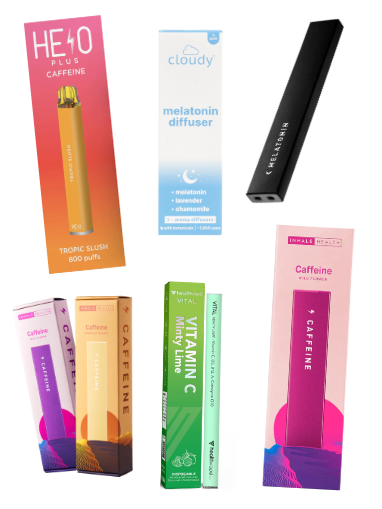
In first grade, I was introduced to Smoking Sally and Healthy Harold.
One of the animated characters in a cartoon PSA, Harold, who refrained from smoking nicotine, was—as his title suggested—healthy. Sally, on the other hand, was a constantly coughing, worn-down, and diminished human whose dishevelment made the first graders in my class vow to never touch a cigarette.
The effectiveness of the infographic, however, did not stay as potent in the long run.
While the conscience of my fellow 6-year-old peers was set on staying smoke-free, a number of them have since changed their minds along with the other 46 million Americans who use nicotine products with 28 million of those being cigarette smokers. And—infamous among the high school crowd—an estimated nine million people in the United States abuse e-cigarettes with the number increasing by 1,800% over the past year.
As the population of vapers continues to grow—so rapidly that one in 20 Americans actively vape—so are the concerns. From developing chronic lung diseases to crippling mental issues, the addictive grip of nicotine vapes remains a chokehold to an increasing number of teenagers and adults worldwide.
With the cigarette alternative being so addictive that thousands of videos now circulate online of teenagers going ballistic while they frantically search for their vape, it has become increasingly more difficult to avoid the repercussions of vaping that many have seen or experienced first-hand. With more and more people throwing away crucial cardiovascular strength and mental fullness that contribute to the overall quality of life, new companies have started to produce wellness vapes, also called wellness inhalers, that do not contain nicotine to avoid the dangers of such addictive drugs.
Rather than using nicotine, these vapes implement more “beneficial” substances such as caffeine, melatonin, vitamin C, and more. Advertised as harmless, these vapes strive to provide nutritional supplements while eliminating the dangerous effects of utilizing an actual nicotine vape. One prominent seller of these products, MELO Air, advertises an assortment of flavored caffeinated and melatonin vapes in flavors from cotton candy and orange dreamsicle to cherry cola and gummy bear. Another notable wellness vape business, HealthVape, sells additional augments such as chamomile, vitamin B-12, and collagen, all for a common price of around 20 dollars. Beyond just their flavoring and supplementations, to understand just how they function compared to that of a nicotine vape, one must understand the products that go into both nicotine and non-nicotine formulas.
The main components of nicotine vape fluid consist of a culmination of ingredients; propylene glycol and glycerin—which serve as the base of the fluid—bring about the white clouds of vapor (which is commonly mistaken as smoke). Diacetyl, a harmful chemical substance that can cause respiratory diseases like popcorn lung, is typically used as flavoring. Vitamin E acetate, an additive hazard to the lungs that can also be found in cannabis products, is commonly utilized to either thicken the fluid to cause a stronger reaction or to dilute the product to make the flavoring less overpowering. And, of course, nicotine serves as the primary additive that stimulates extreme withdrawal problems. All of these inputs heat up to create an aerosol or a combination of fine or solid particles in the state of gas. When heated up, these particles can potentially create cancer-causing carcinogens.
Many of these wellness vapes substitute the flavoring provided by diacetyl for flavors that can be found in vitamins or other plant or fruit extracts, a more organic alternative to chemicals that can coat the lungs in damaging compounds. They also commonly swap the heavy amounts of propylene glycol—which makes up most of the base formula—for an increased concentration of vegetable glycerin, which is derived from plants. While both substances can be found in foods, cosmetic products, and other everyday objects, the results of inhaling them have not yet been deemed safe when taken outside the suggested quantities.
While most companies recommend that users only take about 5-10 inhalations of the product at a time, going beyond this limit is easy as the effects of the supplements provided can quickly be overlooked. Compared to a regular serving-size of coffee, which contains about 95 mg of caffeine, an average caffeine vape will only give you about 15 mg per every 10 puffs, making it easy to abuse. Similar to the caffeinated inhalers, typical melatonin vapes only provide about .5 mg of melatonin per puff, while 1 tablet of melatonin provides about 2 mg.
Despite the fact that very small amounts are fine to be inhaled and can even be found in inhalers, hospital air circulation units, and smoke machines, they are not meant to be taken in considerable doses. Such usage of taking the vape in large amounts—as one might do when vaping—these bases can cause inflammation in the lungs and lead to the same diseases that one might develop from hitting a nicotine vape.
Additionally, while these wellness products do not contain nicotine, some of these supplements—most especially caffeine—are still addictive. Similar to how one might find it difficult to stay awake without an energy drink after they stop drinking them daily, these caffeine inhalers can cause withdrawal problems.
In a nicotine vape, the brain receives a surge of dopamine that increases heart rate and blood pressure within 10 seconds of being used. Amidst the first hour or two after vaping, one might feel very relaxed. However, when this effect wears off, one might feel easily irritable, depressed, frustrated, and/or nervous, causing them to want to hit yet another time. This cycle can repeat itself for years on end, and the same can be said for some of these supplemental vapes.
While certainly a better alternative to a regular nicotine vape, the chronic risks still outweigh the temporary rewards of using a so-called “healthy” wellness vape or inhaler. Regardless of what the product contains, no quick hit of adrenaline or boost of sleep-inducing stimulus is worth causing life-long health problems.
Despite the hollow guarantees of companies claiming that their vapes are completely hazard-free, it can be certain that the only thing truly meant to be breathed into our lungs is oxygen.

























































































